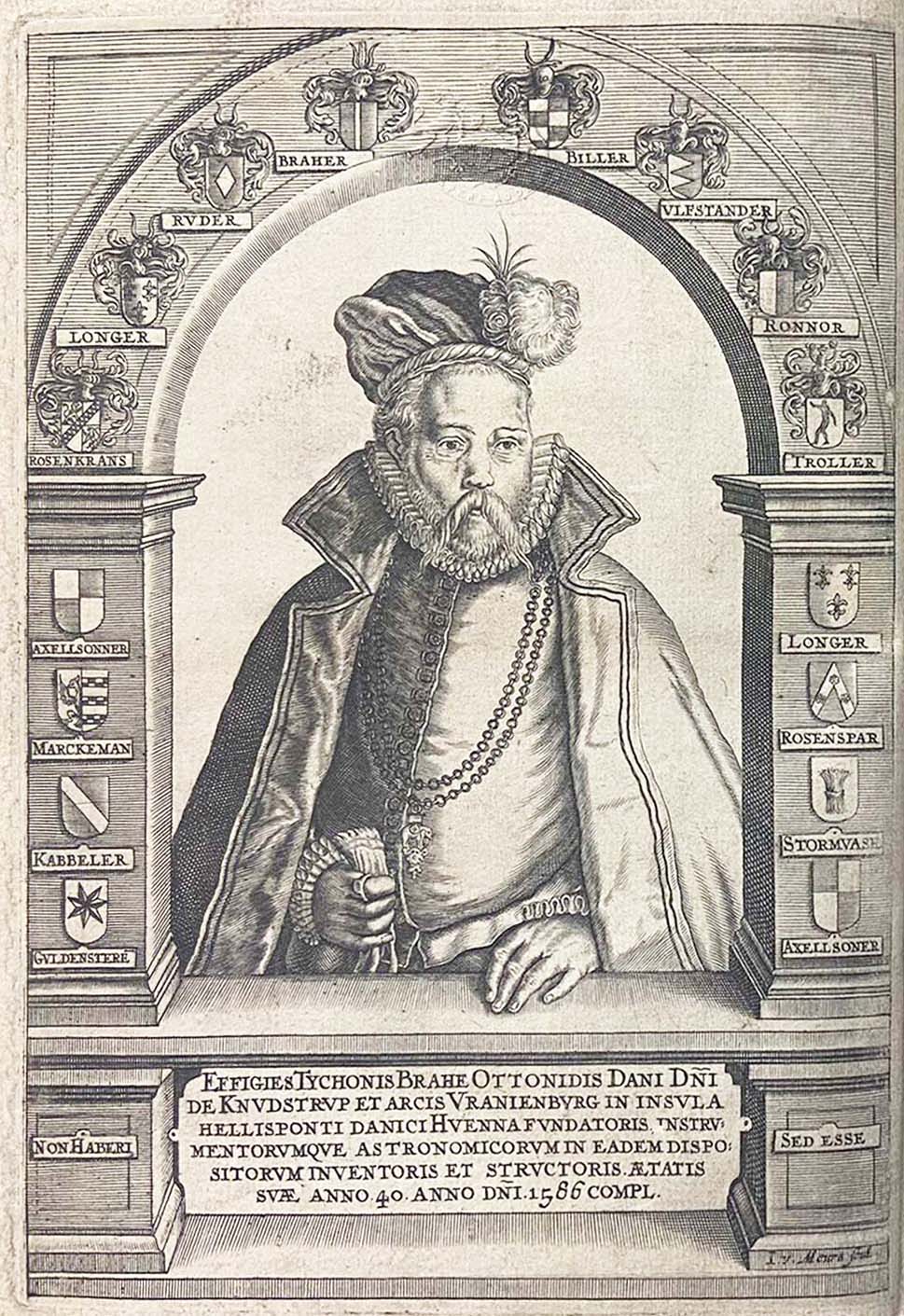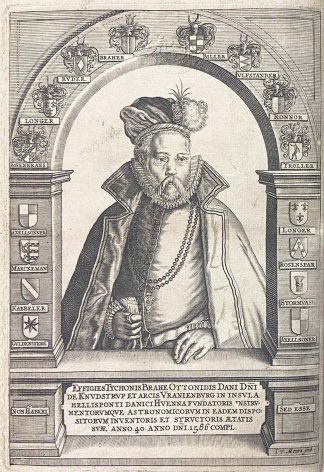GASSENDI, Pierre.
LIVES AND WORKS OF THE GREAT ASTRONOMERS
Tychonis Brahei […] vita. Accessit Nicolai Copernici, Georgii Puerbachii, & Joannis Regiomontani, astronomorum celebrium, vita.
The Hague, A. Vlacq, 1655.£3,250.00
4to. 2 parts in 1, half-title to second, pp. [4], lx, 373, [11]. Title in red and black, engraved frontispieces with Tycho Brahe portrait within arch decorated with his family’s armorial shields, and oval portrait of Copernicus, 2 woodcut diagrams, decorated initials and ornaments. Occasional very light yellowing, first frontispiece and title a bit soiled from printer’s offsetting, paper flaw to upper outer corner of I3. A very good copy in late C17 English calf, double blind ruled, blind-stamped fleurons to corners, raised bands, spine gilt and gilt-lettered, outer edges gilt, spine a trifle rubbed. Earls of Macclesfield armorial bookplate (North Library, 1860) and earlier ms shelfmark to front pastedown, Macclesfield’s blind stamp at head of frontispiece, title and following leaf, early ms price(?) at foot of title.
A very good copy, of illustrious English provenance, of the second edition of this most successful biography of great early modern astronomers, first published in 1654 – an early example of science presented to a popular audience. Pierre Gassendi (1592-1655) was a French Jesuit, philosopher and mathematician, an opponent of Descartes’s rationalism, and a follower of empiricism against Aristotelianism. His important experiments spanned astronomy (he was the first to observe the transit of Mercury across the Sun), the measurement of the speed of sound, and the use of camera obscura to measure the diameter of the moon. ‘Privately he was in favour of Copernicanism, but as a Jesuit priest in Catholic France, he found it unwise to make his sympathy publicly known. He therefore supported the Tychonian world system as a compromise approved by the Church, if only as a substitute of the heliocentric system he believed in’ (Kragh, p.124).
The present work is mostly devoted to the Danish astronomer Tycho Brahe (1546-1601), handsomely portrayed on the engraved frontispiece; to his biography, in six parts, are appended those of Copernicus, Peuerbach and Regiomontanus, added at the publisher’s request. Gassendi focused, in non-judgemental manner, mainly on his life and work, including excursions into his side-interests in alchemy, astrology and Neo-Latin poetry, and his family history. Brahe theorized the ‘geo-heliocentric’ system – here illustrated with a woodcut diagram – in which the Sun and Moon orbited the Earth, whilst the other planets orbited the Sun. However, Gassendi’s biography discussed mostly Brahe’s talent for empirical astronomical observations, organized chronologically and described in detail, from the instruments he used. Anecdotes revealing Brahe’s known eccentricities include how he lost his nose in an argument in 1566, often wearing a prosthesis in later years, and how he owned a trained pet elk who died falling from the stairs, after drinking beer. The last three, much shorter biographies discuss in similar fashion the life and observations of Copernicus (1473-1543), with a diagram illustrating his heliocentric theory (with a woodcut); the Austrian astronomer Georg von Peuerbach (1423-61), a supporter of the Ptolemaic model and author of ‘Theoricae Novae Planetarum’ (1472), the standard astronomy text for several decades; and the German astronomer Regiomontanus (1436-76), whose discoveries provided the basis for Copernicanism. Lord Macclesfield’s was the great English scientific library of his day. He was a pall-bearer at Newton’s funeral.
Houzeau-Lancaster I, 6190. Not in Graesse.In stock




